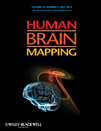
Brain Structure & Function
Scope & Guideline
Fostering Knowledge in Brain Structure and Function
Introduction
Aims and Scopes
- Neuroanatomy and Connectivity:
Research focusing on the structural organization of the brain, including detailed mapping of neural connections and anatomical features across species, with an emphasis on comparative studies. - Neurodevelopment and Plasticity:
Investigations into how brain structure and function evolve during development and how they adapt in response to experiences, injuries, or diseases. - Functional Neuroimaging:
Utilizing techniques such as fMRI, DTI, and electrophysiological methods to explore brain function and connectivity, and how these relate to cognitive processes and behaviors. - Pathological Conditions:
Studies examining brain structure and function in the context of neurological and psychiatric disorders, aiming to identify biomarkers and understand disease mechanisms. - Comparative Neuroscience:
Exploratory work comparing brain structures and functions among different species, enhancing understanding of evolutionary adaptations and functional specializations.
Trending and Emerging
- Multimodal Imaging Techniques:
There is an increasing trend towards integrating various imaging modalities (e.g., fMRI, DTI, and PET) to provide a more comprehensive understanding of brain connectivity and function. - Neural Networks and Connectivity:
Research focusing on the brain as a network, exploring the relationships and interactions between different brain regions, is gaining prominence, particularly in the context of cognitive functions and disorders. - Functional and Structural Correlates of Behavior:
Studies that link structural brain changes with functional outcomes and behavioral measures are emerging, emphasizing the relevance of neuroanatomy to real-world cognitive and behavioral outcomes. - Neurodevelopmental Dynamics:
There is a growing interest in understanding brain development across the lifespan, particularly how early experiences influence structural and functional outcomes later in life. - Translational Neuroscience:
Research that bridges findings from animal models to human applications is trending, focusing on how basic neuroscience can inform clinical practices and treatments for neurological disorders.
Declining or Waning
- Basic Experimental Models:
Research employing traditional animal models for basic neuroanatomy and function is becoming less prevalent as newer in vivo imaging techniques and human studies gain traction. - Isolated Brain Function Studies:
Studies focusing solely on isolated brain functions without considering the broader context of brain networks and interactions are appearing less frequently. - Overly Narrow Focus on Specific Brain Regions:
Research that examines only specific brain areas without integrating their role within larger functional networks is waning, as there is a growing emphasis on connectivity and network-based approaches.
Similar Journals

HUMAN BRAIN MAPPING
Connecting knowledge to clinical practice in neuroscience.HUMAN BRAIN MAPPING, published by Wiley, is a premier journal in the field of neuroscience, devoted to comprehensively advancing understanding of brain structure and function through innovative mapping techniques. With an impressive impact factor and ranked in the Q1 category across multiple relevant disciplines—including Anatomy, Neurology, and Radiology—this journal is recognized as a vital resource for researchers and professionals passionate about the complexities of the human brain. Founded in 1993 and continuously publishing groundbreaking research, HUMAN BRAIN MAPPING is essential for those looking to stay at the forefront of developments in anatomical and neurological research. Though it does not currently offer Open Access options, the journal remains committed to disseminating high-quality research that influences clinical practices and academic inquiry. Its esteemed position within Scopus highlights its significance; charting at the top percentiles across various medical and health fields serves as a testament to the critical contributions made by the authors and researchers involved. As it converges toward 2024, HUMAN BRAIN MAPPING continues to be the go-to platform for publishing pivotal insights into the intricacies of brain mapping methodologies and applications.

Journal of Integrative Neuroscience
Bridging Disciplines to Illuminate the Nervous SystemWelcome to the Journal of Integrative Neuroscience, a prominent platform dedicated to advancing the field of neuroscience by fostering interdisciplinary research and innovation. Published by IMR PRESS, this open-access journal has been committed to disseminating high-quality research since its inception in 2002, with a vision to integrate various aspects of neuroscience, from theoretical foundations to applied methodologies, ultimately enhancing our understanding of the brain and nervous system. With an evolving presence in the academic community, the journal holds significant rankings, such as Q2 in Medicine and Q3 in Neuroscience for 2023, reflecting its growing impact and value to researchers and professionals alike. The journal is accessible globally, having adopted an open-access model in 2018, ensuring that vital neuroscience findings reach a broader audience without barriers. Positioned in Singapore and serving an international readership, the Journal of Integrative Neuroscience is your essential resource for the latest insights and discoveries in a rapidly evolving field.

NEURAL PLASTICITY
Transforming Understanding in Neural MechanismsNEURAL PLASTICITY is a distinguished open access journal published by Hindawi Ltd, focusing on innovative research in the field of neurology and neuroscience. With its ISSN 2090-5904 and E-ISSN 1687-5443, this journal has been a vital resource for researchers since its inception in 1989, providing high-quality content that bridges the gap between theoretical and clinical aspects of neural plasticity. The journal is recognized with a 2023 category quartile ranking of Q2 in both Neurology and Clinical Neurology, confirming its relevance and impact within the academic community. NEURAL PLASTICITY is ranked 85th out of 400 in Medicine: Neurology (Clinical) and 46th out of 192 in Neuroscience: Neurology on Scopus, placing it in the 78th and 76th percentiles respectively. This makes it a significant platform for publishing cutting-edge research that informs clinical practices and enhances our understanding of neural mechanisms. Researchers, professionals, and students can access a wealth of studies that contribute to the evolving discussion on neural adaptation, recovery, and therapeutic interventions, making NEURAL PLASTICITY an essential addition to the libraries of those dedicated to advancing neurological science.

NEUROREPORT
Shaping the future of neuroscience with every report.NEUROREPORT is a distinguished journal in the field of neuroscience, published by Lippincott Williams & Wilkins. With an ISSN of 0959-4965 and an E-ISSN of 1473-558X, the journal has established itself as a vital platform for disseminating innovative research and developments in the dynamic area of neuroscience since its inception in 1990. Currently, it is positioned in the Q3 category of the 2023 Journal Rankings, reflecting its respectable standing within the community of neuroscience professionals, ranked #74 out of 113 in general neuroscience on Scopus, placing it in the 34th percentile. While it operates on a traditional subscription model, NEUROREPORT is committed to fostering knowledge sharing in the realm of neurobiology, neuropharmacology, and cognitive studies among researchers, professionals, and students alike. With its broad scope and commitment to scientific excellence, the journal continues to be a cornerstone for those seeking to stay ahead in the evolving landscape of neurological research.

Developmental Cognitive Neuroscience
Connecting research and practice in cognitive development.Developmental Cognitive Neuroscience is a leading interdisciplinary journal published by ELSEVIER SCI LTD, dedicated to advancing the field of cognitive neuroscience with a specific focus on the developmental aspects of brain function and behavior. Since its inception in 2011, this Open Access journal has continued to thrive, gaining significant recognition with a remarkable impact factor that places it in the Q1 category of cognitive neuroscience, ranking 22nd out of 115 in Scopus. This enhances its visibility and accessibility to a global audience, including researchers, clinicians, and students keen on exploring the intricate relationship between cognitive development and neurological processes. The journal embraces a wide array of topics, from the impact of early life experiences on cognitive outcomes to neurodevelopmental disorders, fostering an enriching platform for disseminating high-quality research and innovative findings. As it progresses towards 2024, Developmental Cognitive Neuroscience remains pivotal in shaping future research and understanding in the field.

CORTEX
Unveiling Insights into Cognitive ProcessesCORTEX is a premier international journal published by Elsevier Masson, focusing on the cutting-edge areas of cognitive neuroscience, psychology, and neurology. With an impressive impact factor that places it in Q1 quartiles across multiple categories such as Cognitive Neuroscience and Neuropsychology, this journal serves as a vital resource for researchers, clinicians, and students alike. Established in 1964, CORTEX has continued to excel in disseminating high-quality scholarly work, offering insights that significantly enhance our understanding of the brain's functioning and behavior. Although not an open-access publication, it provides various access options to ensure the dissemination of knowledge is as wide-reaching as possible. As the field of cognitive psychology evolves, CORTEX remains at the forefront, fostering an environment for interdisciplinary collaboration and innovation. Researchers seeking to stay engaged with the latest advancements will find CORTEX an indispensable tool for their professional development.

BRAIN RESEARCH
Unlocking the mysteries of the brain, one study at a time.BRAIN RESEARCH is a premier journal published by Elsevier, specializing in the intricate domains of neuroscience, developmental biology, and molecular biology. Established in 1966, this esteemed publication has become a cornerstone for researchers, professionals, and students dedicated to advancing our understanding of brain function and disorders. With an impressive impact factor and a consistent presence in the Q2 quartiles across key categories—such as Developmental Biology, Neurology, and Neuroscience—it stands out as an essential resource for disseminating innovative research and pioneering insights. The journal's scope encompasses both clinical and fundamental studies, fostering a multidisciplinary approach to the complexities of neural systems. Although it is not an open-access journal, BRAIN RESEARCH provides a vital platform for sharing progressive findings that can inspire future studies and contribute significantly to the evolutionary discourse in neuroscience. Based in the Netherlands, at RADARWEG 29, 1043 NX AMSTERDAM, BRAIN RESEARCH continues to shape the landscape of neuroscience research, inviting submissions that explore the latest discoveries and therapeutic strategies.

NEUROSCIENCE RESEARCH
Fostering Emerging Voices in Brain ScienceNEUROSCIENCE RESEARCH, published by Elsevier Ireland Ltd, is a leading journal in the field of neuroscience, with a notable reputation for disseminating high-quality research that spans a variety of topics within the discipline. With an ISSN of 0168-0102 and an E-ISSN of 1872-8111, this journal serves as a vital platform for both established researchers and emerging voices in the field. Ranking in the Q2 quartile in both Medicine and Neuroscience categories, it has been recognized as a reliable source of innovative findings since its inception in 1984, with continuous publication through 2024. Although it does not currently offer Open Access options, the journal is indexed in Scopus, holding a significant position at Rank #48/113 in General Neuroscience, reflecting its contribution to advancing the understanding of neural mechanisms across various contexts. With its address anchored in Ireland, NEUROSCIENCE RESEARCH plays an essential role in bridging scientific inquiry and practical applications, making it an indispensable resource for researchers, professionals, and students dedicated to the burgeoning field of neuroscience.

Biological Psychiatry-Cognitive Neuroscience and Neuroimaging
Unlocking the Secrets of the Mind through Advanced ResearchBiological Psychiatry-Cognitive Neuroscience and Neuroimaging is a leading interdisciplinary journal published by Elsevier, focusing on the convergence of biological psychiatry, cognitive neuroscience, and advanced neuroimaging techniques. With its prestigious Q1 rankings across essential categories such as Biological Psychiatry, Cognitive Neuroscience, and Neurology (clinical), this journal is at the forefront of research that examines the complexities of mental health through innovative methodologies. Covering a broad spectrum of topics from neurobiological mechanisms to clinical applications, it aims to provide a platform for scholars and practitioners to exchange insights on mental disorders and their neurobiological underpinnings. The impact factor and Scopus rankings further underscore its importance, with rankings highlighting its position in the top percentiles of related disciplines. By fostering an open exchange of ideas and promoting cutting-edge research, this journal is an essential resource for researchers, professionals, and students dedicated to advancements in the understanding and treatment of psychiatric and neurological conditions.

NEUROSCIENCE LETTERS
Bridging Gaps in Neuroscience Knowledge.NEUROSCIENCE LETTERS is a distinguished journal published by ELSEVIER IRELAND LTD, focusing on disseminating impactful research across the field of neuroscience. With its ISSN 0304-3940 and E-ISSN 1872-7972, the journal serves as a vital platform for researchers, professionals, and students aiming to explore the complexities of nervous system function and related disorders. Since its inception in 1975, NEUROSCIENCE LETTERS has contributed significantly to the field, currently positioned in the Q3 category for Miscellaneous Neuroscience, with a respectable Scopus rank of 52/113, placing it in the 54th percentile among its peers. The journal is published in Ireland and offers a comprehensive repository of scientific insights, methodologies, and innovative findings that advance our understanding of neurological phenomena. While not an open-access journal, it remains an essential resource for the latest advances in neuroscience research and the academic community’s collective knowledge.